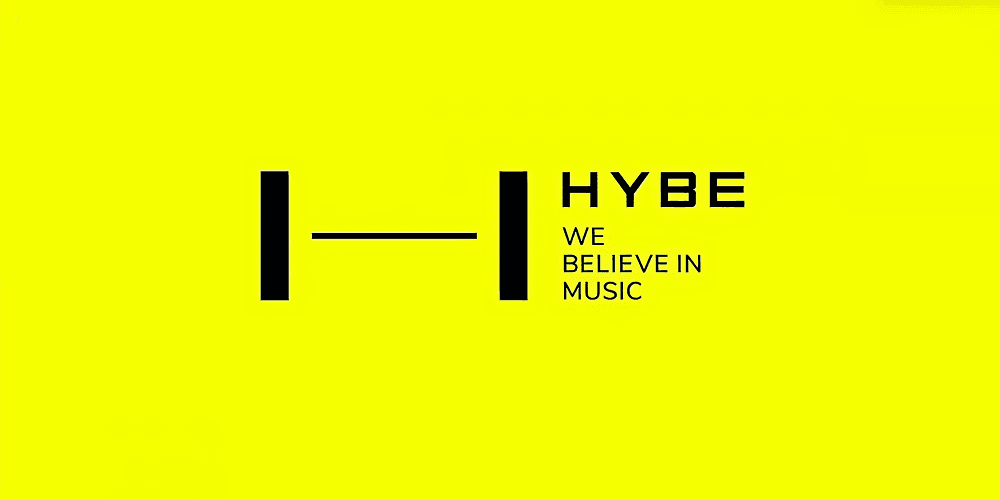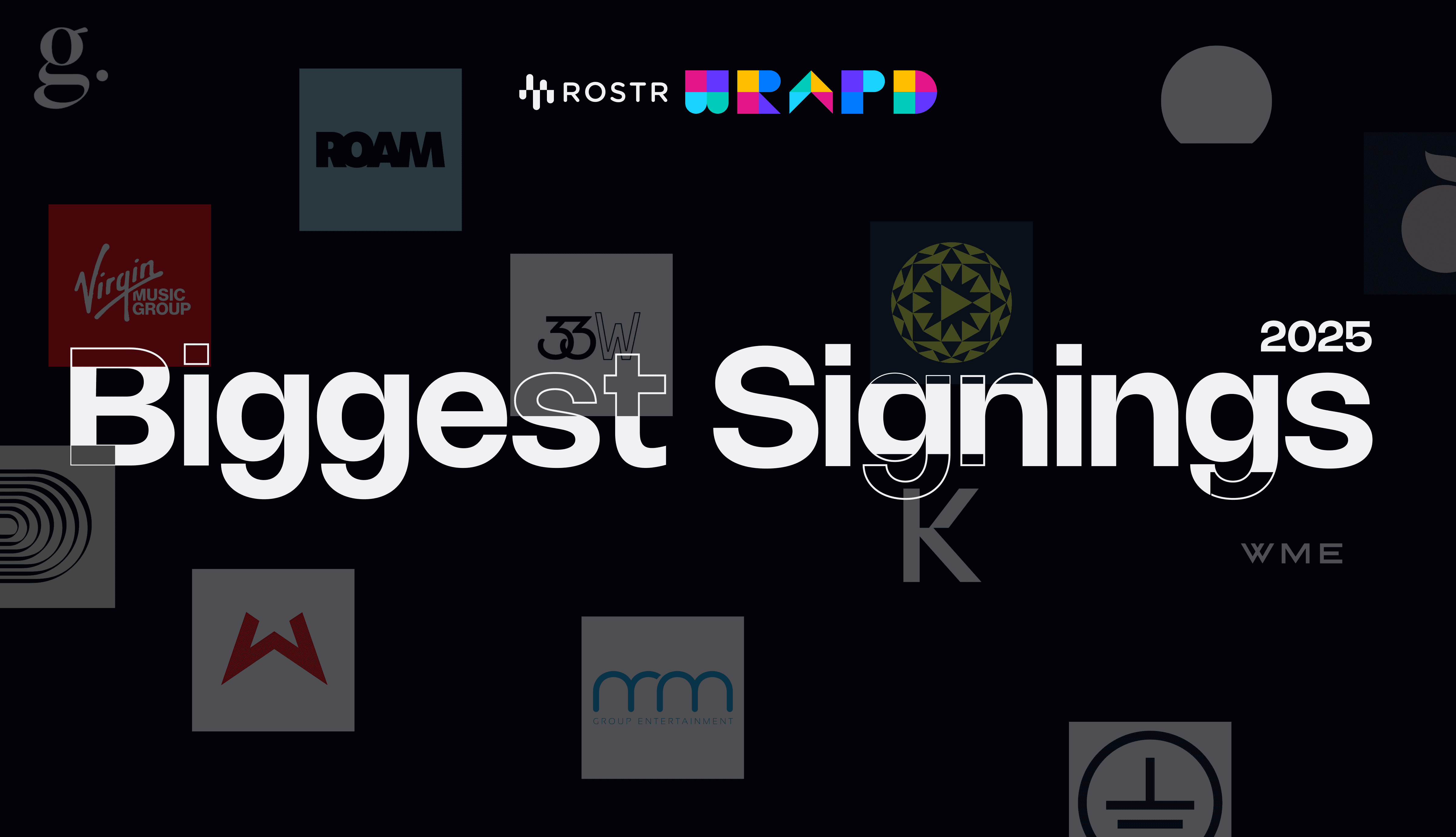


Who Booked Coachella? The companies & data behind 2026's lineup
This is a guest post by Mark Williamson, CEO of The ROSTR Group (which owns and operates New Industry Focus).
ROSTR launched in October 2019. When the Coachella 2020 lineup dropped a few months later, we used our agency-representation database to break it down by who booked each artist. On a whim we swapped the artist names for agency names and sent it to our small mailing list… then my phone started blowing up.
Since then the 5 editions of the series have reached more than 5 million people. It's not just a peek behind the curtain of the world's most famous festival – it's also a peek into the way the industry itself works. As one viral tweet at the time said "(it's) like looking at the bones of the industry" Yesterday, we published the 6th edition of Who Booked Coachella. This is a deeper dive into the data…
The Highlights / TL/DR
Last year Goldenvoice surprise dropped the Coachella 2025 lineup in late November instead of the usual January drop-date. This year, they went even earlier, dropping the full lineup at 9.30pm PT on a Monday in mid-September.
We started pulling the data immediately, here are the key takeaways:
Wasserman Music booked the most artists again (by far)
Major agency share of the lineup increased again and is now back to pre-pandemic levels
Independent artist share of the lineup jumped to it's highest level this decade
Gender balance of artists was similarly imbalanced to last year
Guitar-band genres are up, as is Pop. Hiphop, Latin and other genres are down

Who Booked Coachella? The Agency Data
This is the 6th Who Booked edition, and the 6th time Wasserman Music has the largest share of the lineup (including when they were Paradigm). This year, Wass's share of the lineup increased to 32% – more than double 2nd place UTA's 14%.
While it's fairly typical for Wass to have the highest share at mainstream festivals (they also have by far the largest roster), there are a couple of interesting insights this year:
1. Wasserman have stretched the gap between them and the rest of the pack (top right chart). Given all the other majors have fewer total bookings for '26, this appears to be at their expense.
2. The general consensus for some time has been that Wass's festival volume comes "down the billing". However, the bottom left chart demonstrates that Wass's share of bookings is fairly consistent at both the top (31%) and through the whole lineup (32%).
The last couple of years have seen UTA climb up and into second place this year. UTA is also booking further "up market" with almost a quarter of the top billed artists (top 2 rows).
WME are similarly positioned towards the top-end with fewer artists overall but a higher proportion of highly billed artists. CAA, who swept the main headliners last year have a quieter year overall for 2026.
Taking a more macro look (bottom right chart), almost 3 in every 4 artists on 2026's lineup is booked by one of the 4 major agencies. The pandemic brought upheaval in the agency ecosystem and we saw that manifest in a trend towards greater fragmentation – and higher independent agency share at Coachella. But that has now almost completely reversed.
It's a stark contrast to the label data…

Who Releases Coachella? The Label Data
Label data tells an indirect, yet important, part of the Coachella story. Similar to the agency data, the pandemic brought some weird trends. In 2022 the ratio of major label to independent artists came close to 50/50 – possibly because major label artists were more likely to have the funding/resources to be active. Since then, the ratio has been hovering around 60/40 (to independents). But at next year's festival, independent artists will take their largest share of the lineup this decade (68%).
The indie story gets stronger still. While the headliners are all major-label affiliated, every other row on the poster is majority independent. And, the further down you go the higher the share of the lineup is independent artists. While this isn't exactly surprising – smaller artists are more likely to be independent – it's worth pointing out that a large festival like Coachella needs it's lower billing to be successful. Bottom line - festivals really need a healthy independent sector.
Across the major labels, UMG and Sony came in tied at 12% of the lineup. BUT, UMG did clean-sweep the main headliners (Sabrina, Bieber, Karol G), so they come out on top. WMG had the smallest share, but two of the most prolific labels in Atlantic and Warner Records.

Who Manages Coachella?
Coachella artist management data is counter-intuitively interesting mainly because of how difficult it is to draw any insights from it. Unlike agencies, and labels (thanks to their parents), the artist management world is truly fragmented. The 142 artists on the lineup are represented by more than 113 different management companies. Just 10 companies manage more than one artist on the lineup.
Aside from the fragmentation insight, we can focus in on a few outliers. Volara, led by Janelle Lopez Genzink, manage Friday's headliner Sabrina Carpenter. Justin Bieber, formerly managed by Scooter Braun, is now running his business out of a family office. Karol G is managed by Noah Assad and Raymond Acosta at Habibi. Finally, Anyma is managed by Evan Baker at eau-forte.
In terms of most bookings, just 4 companies managed more than a couple of artists. Circuit Group (Ninajirachi, SOSA, RØZ, &friends), Red Light (Interpol, The Strokes, Subtronics, Duke Dumont), Foundations (Laufey, Slayyyter, Samia), and Prime Culture (Ben Sterling, Rossi., Carlita).

Coachella '26: The Genre Data
Dance/EDM remains the largest share of genre for Coachella 2026. Indie/Rock/Alt artists were the biggest gainers this year (+7% vs 2025) - a reflection of a resurgence of guitar-driven genres in popular culture. Pop (+4%) also increased with other prominent genres like HipHop/Rap, Latin & R&B/Soul all declining for 2026.
The further you move down the poster, the more it becomes clear that Coachella, and mainstream festivals in general, are reliant on guitar-bands and DJs to fill stages (and crowds). This also lines up with the independent artist data earlier in this article.

Coachella '26: Gender Balance
2026's headliners are a straight 50/50 split between male and female artists. But, that's the only part of the lineup that's balanced. Across the full lineup, almost 2 in every 3 artists on the lineup are male. Female (28%) or groups with multiple genders (6%) combined make up the rest.
Looking at the last few years and similarly to the agency and label data, the overall balanced shifted around the pandemic - getting as close as 60/40 in 2022 and 2023. However, since then the gender gap has been increasing steadily to circa 70/30 for the last few years.
Note - when we look at wider ROSTR data we see a similar ratio repeat itself across agency, label and management rosters. While festivals can and should do more to get a better balance on lineups, if the companies that are working those artists are similarly imbalanced then it's going to be hard to fix in "the last mile".

Final Word
After a couple of years when Coachella hasn't sold out, it's clear that Goldenvoice are making some changes. The increasingly earlier lineup reveals are an obvious one and are at least in part about getting a longer on-sale period. But, it's plausible this is also about locking down those big headline anchors earlier in a world where a lot of the most in-demand artists are making hay on solo world tours.
It's hard to draw a direct line, but it's also plausible that greater investment in the top of the bill is helping drive that major agency concentration (who tend to represent larger artists), while the increasing independent artist share is in part due to a longer tail down the lineup. These are just guesses for now but perhaps something we can explore in next year's edition by looking at the trends of artist sizes over time.
For now though, that's the 6th edition of Who Booked Coachella?
👉 See all the posters on our Instagram account
Method
The data in this report and Who Booked Coachella? is based on ROSTR data and the official Coachella lineup announcement. ROSTR tracks tens of thousands of music companies, their rosters and data about those artists (including genre, gender etc). We match the artists on the lineup to our database and then use our data to formulate these charts and analysis. You can sign up for a free ROSTR account here.
This is a guest post by Mark Williamson, CEO of The ROSTR Group (which owns and operates New Industry Focus).
ROSTR launched in October 2019. When the Coachella 2020 lineup dropped a few months later, we used our agency-representation database to break it down by who booked each artist. On a whim we swapped the artist names for agency names and sent it to our small mailing list… then my phone started blowing up.
Since then the 5 editions of the series have reached more than 5 million people. It's not just a peek behind the curtain of the world's most famous festival – it's also a peek into the way the industry itself works. As one viral tweet at the time said "(it's) like looking at the bones of the industry" Yesterday, we published the 6th edition of Who Booked Coachella. This is a deeper dive into the data…
The Highlights / TL/DR
Last year Goldenvoice surprise dropped the Coachella 2025 lineup in late November instead of the usual January drop-date. This year, they went even earlier, dropping the full lineup at 9.30pm PT on a Monday in mid-September.
We started pulling the data immediately, here are the key takeaways:
Wasserman Music booked the most artists again (by far)
Major agency share of the lineup increased again and is now back to pre-pandemic levels
Independent artist share of the lineup jumped to it's highest level this decade
Gender balance of artists was similarly imbalanced to last year
Guitar-band genres are up, as is Pop. Hiphop, Latin and other genres are down

Who Booked Coachella? The Agency Data
This is the 6th Who Booked edition, and the 6th time Wasserman Music has the largest share of the lineup (including when they were Paradigm). This year, Wass's share of the lineup increased to 32% – more than double 2nd place UTA's 14%.
While it's fairly typical for Wass to have the highest share at mainstream festivals (they also have by far the largest roster), there are a couple of interesting insights this year:
1. Wasserman have stretched the gap between them and the rest of the pack (top right chart). Given all the other majors have fewer total bookings for '26, this appears to be at their expense.
2. The general consensus for some time has been that Wass's festival volume comes "down the billing". However, the bottom left chart demonstrates that Wass's share of bookings is fairly consistent at both the top (31%) and through the whole lineup (32%).
The last couple of years have seen UTA climb up and into second place this year. UTA is also booking further "up market" with almost a quarter of the top billed artists (top 2 rows).
WME are similarly positioned towards the top-end with fewer artists overall but a higher proportion of highly billed artists. CAA, who swept the main headliners last year have a quieter year overall for 2026.
Taking a more macro look (bottom right chart), almost 3 in every 4 artists on 2026's lineup is booked by one of the 4 major agencies. The pandemic brought upheaval in the agency ecosystem and we saw that manifest in a trend towards greater fragmentation – and higher independent agency share at Coachella. But that has now almost completely reversed.
It's a stark contrast to the label data…

Who Releases Coachella? The Label Data
Label data tells an indirect, yet important, part of the Coachella story. Similar to the agency data, the pandemic brought some weird trends. In 2022 the ratio of major label to independent artists came close to 50/50 – possibly because major label artists were more likely to have the funding/resources to be active. Since then, the ratio has been hovering around 60/40 (to independents). But at next year's festival, independent artists will take their largest share of the lineup this decade (68%).
The indie story gets stronger still. While the headliners are all major-label affiliated, every other row on the poster is majority independent. And, the further down you go the higher the share of the lineup is independent artists. While this isn't exactly surprising – smaller artists are more likely to be independent – it's worth pointing out that a large festival like Coachella needs it's lower billing to be successful. Bottom line - festivals really need a healthy independent sector.
Across the major labels, UMG and Sony came in tied at 12% of the lineup. BUT, UMG did clean-sweep the main headliners (Sabrina, Bieber, Karol G), so they come out on top. WMG had the smallest share, but two of the most prolific labels in Atlantic and Warner Records.

Who Manages Coachella?
Coachella artist management data is counter-intuitively interesting mainly because of how difficult it is to draw any insights from it. Unlike agencies, and labels (thanks to their parents), the artist management world is truly fragmented. The 142 artists on the lineup are represented by more than 113 different management companies. Just 10 companies manage more than one artist on the lineup.
Aside from the fragmentation insight, we can focus in on a few outliers. Volara, led by Janelle Lopez Genzink, manage Friday's headliner Sabrina Carpenter. Justin Bieber, formerly managed by Scooter Braun, is now running his business out of a family office. Karol G is managed by Noah Assad and Raymond Acosta at Habibi. Finally, Anyma is managed by Evan Baker at eau-forte.
In terms of most bookings, just 4 companies managed more than a couple of artists. Circuit Group (Ninajirachi, SOSA, RØZ, &friends), Red Light (Interpol, The Strokes, Subtronics, Duke Dumont), Foundations (Laufey, Slayyyter, Samia), and Prime Culture (Ben Sterling, Rossi., Carlita).

Coachella '26: The Genre Data
Dance/EDM remains the largest share of genre for Coachella 2026. Indie/Rock/Alt artists were the biggest gainers this year (+7% vs 2025) - a reflection of a resurgence of guitar-driven genres in popular culture. Pop (+4%) also increased with other prominent genres like HipHop/Rap, Latin & R&B/Soul all declining for 2026.
The further you move down the poster, the more it becomes clear that Coachella, and mainstream festivals in general, are reliant on guitar-bands and DJs to fill stages (and crowds). This also lines up with the independent artist data earlier in this article.

Coachella '26: Gender Balance
2026's headliners are a straight 50/50 split between male and female artists. But, that's the only part of the lineup that's balanced. Across the full lineup, almost 2 in every 3 artists on the lineup are male. Female (28%) or groups with multiple genders (6%) combined make up the rest.
Looking at the last few years and similarly to the agency and label data, the overall balanced shifted around the pandemic - getting as close as 60/40 in 2022 and 2023. However, since then the gender gap has been increasing steadily to circa 70/30 for the last few years.
Note - when we look at wider ROSTR data we see a similar ratio repeat itself across agency, label and management rosters. While festivals can and should do more to get a better balance on lineups, if the companies that are working those artists are similarly imbalanced then it's going to be hard to fix in "the last mile".

Final Word
After a couple of years when Coachella hasn't sold out, it's clear that Goldenvoice are making some changes. The increasingly earlier lineup reveals are an obvious one and are at least in part about getting a longer on-sale period. But, it's plausible this is also about locking down those big headline anchors earlier in a world where a lot of the most in-demand artists are making hay on solo world tours.
It's hard to draw a direct line, but it's also plausible that greater investment in the top of the bill is helping drive that major agency concentration (who tend to represent larger artists), while the increasing independent artist share is in part due to a longer tail down the lineup. These are just guesses for now but perhaps something we can explore in next year's edition by looking at the trends of artist sizes over time.
For now though, that's the 6th edition of Who Booked Coachella?
👉 See all the posters on our Instagram account
Method
The data in this report and Who Booked Coachella? is based on ROSTR data and the official Coachella lineup announcement. ROSTR tracks tens of thousands of music companies, their rosters and data about those artists (including genre, gender etc). We match the artists on the lineup to our database and then use our data to formulate these charts and analysis. You can sign up for a free ROSTR account here.
This is a guest post by Mark Williamson, CEO of The ROSTR Group (which owns and operates New Industry Focus).
ROSTR launched in October 2019. When the Coachella 2020 lineup dropped a few months later, we used our agency-representation database to break it down by who booked each artist. On a whim we swapped the artist names for agency names and sent it to our small mailing list… then my phone started blowing up.
Since then the 5 editions of the series have reached more than 5 million people. It's not just a peek behind the curtain of the world's most famous festival – it's also a peek into the way the industry itself works. As one viral tweet at the time said "(it's) like looking at the bones of the industry" Yesterday, we published the 6th edition of Who Booked Coachella. This is a deeper dive into the data…
The Highlights / TL/DR
Last year Goldenvoice surprise dropped the Coachella 2025 lineup in late November instead of the usual January drop-date. This year, they went even earlier, dropping the full lineup at 9.30pm PT on a Monday in mid-September.
We started pulling the data immediately, here are the key takeaways:
Wasserman Music booked the most artists again (by far)
Major agency share of the lineup increased again and is now back to pre-pandemic levels
Independent artist share of the lineup jumped to it's highest level this decade
Gender balance of artists was similarly imbalanced to last year
Guitar-band genres are up, as is Pop. Hiphop, Latin and other genres are down

Who Booked Coachella? The Agency Data
This is the 6th Who Booked edition, and the 6th time Wasserman Music has the largest share of the lineup (including when they were Paradigm). This year, Wass's share of the lineup increased to 32% – more than double 2nd place UTA's 14%.
While it's fairly typical for Wass to have the highest share at mainstream festivals (they also have by far the largest roster), there are a couple of interesting insights this year:
1. Wasserman have stretched the gap between them and the rest of the pack (top right chart). Given all the other majors have fewer total bookings for '26, this appears to be at their expense.
2. The general consensus for some time has been that Wass's festival volume comes "down the billing". However, the bottom left chart demonstrates that Wass's share of bookings is fairly consistent at both the top (31%) and through the whole lineup (32%).
The last couple of years have seen UTA climb up and into second place this year. UTA is also booking further "up market" with almost a quarter of the top billed artists (top 2 rows).
WME are similarly positioned towards the top-end with fewer artists overall but a higher proportion of highly billed artists. CAA, who swept the main headliners last year have a quieter year overall for 2026.
Taking a more macro look (bottom right chart), almost 3 in every 4 artists on 2026's lineup is booked by one of the 4 major agencies. The pandemic brought upheaval in the agency ecosystem and we saw that manifest in a trend towards greater fragmentation – and higher independent agency share at Coachella. But that has now almost completely reversed.
It's a stark contrast to the label data…

Who Releases Coachella? The Label Data
Label data tells an indirect, yet important, part of the Coachella story. Similar to the agency data, the pandemic brought some weird trends. In 2022 the ratio of major label to independent artists came close to 50/50 – possibly because major label artists were more likely to have the funding/resources to be active. Since then, the ratio has been hovering around 60/40 (to independents). But at next year's festival, independent artists will take their largest share of the lineup this decade (68%).
The indie story gets stronger still. While the headliners are all major-label affiliated, every other row on the poster is majority independent. And, the further down you go the higher the share of the lineup is independent artists. While this isn't exactly surprising – smaller artists are more likely to be independent – it's worth pointing out that a large festival like Coachella needs it's lower billing to be successful. Bottom line - festivals really need a healthy independent sector.
Across the major labels, UMG and Sony came in tied at 12% of the lineup. BUT, UMG did clean-sweep the main headliners (Sabrina, Bieber, Karol G), so they come out on top. WMG had the smallest share, but two of the most prolific labels in Atlantic and Warner Records.

Who Manages Coachella?
Coachella artist management data is counter-intuitively interesting mainly because of how difficult it is to draw any insights from it. Unlike agencies, and labels (thanks to their parents), the artist management world is truly fragmented. The 142 artists on the lineup are represented by more than 113 different management companies. Just 10 companies manage more than one artist on the lineup.
Aside from the fragmentation insight, we can focus in on a few outliers. Volara, led by Janelle Lopez Genzink, manage Friday's headliner Sabrina Carpenter. Justin Bieber, formerly managed by Scooter Braun, is now running his business out of a family office. Karol G is managed by Noah Assad and Raymond Acosta at Habibi. Finally, Anyma is managed by Evan Baker at eau-forte.
In terms of most bookings, just 4 companies managed more than a couple of artists. Circuit Group (Ninajirachi, SOSA, RØZ, &friends), Red Light (Interpol, The Strokes, Subtronics, Duke Dumont), Foundations (Laufey, Slayyyter, Samia), and Prime Culture (Ben Sterling, Rossi., Carlita).

Coachella '26: The Genre Data
Dance/EDM remains the largest share of genre for Coachella 2026. Indie/Rock/Alt artists were the biggest gainers this year (+7% vs 2025) - a reflection of a resurgence of guitar-driven genres in popular culture. Pop (+4%) also increased with other prominent genres like HipHop/Rap, Latin & R&B/Soul all declining for 2026.
The further you move down the poster, the more it becomes clear that Coachella, and mainstream festivals in general, are reliant on guitar-bands and DJs to fill stages (and crowds). This also lines up with the independent artist data earlier in this article.

Coachella '26: Gender Balance
2026's headliners are a straight 50/50 split between male and female artists. But, that's the only part of the lineup that's balanced. Across the full lineup, almost 2 in every 3 artists on the lineup are male. Female (28%) or groups with multiple genders (6%) combined make up the rest.
Looking at the last few years and similarly to the agency and label data, the overall balanced shifted around the pandemic - getting as close as 60/40 in 2022 and 2023. However, since then the gender gap has been increasing steadily to circa 70/30 for the last few years.
Note - when we look at wider ROSTR data we see a similar ratio repeat itself across agency, label and management rosters. While festivals can and should do more to get a better balance on lineups, if the companies that are working those artists are similarly imbalanced then it's going to be hard to fix in "the last mile".

Final Word
After a couple of years when Coachella hasn't sold out, it's clear that Goldenvoice are making some changes. The increasingly earlier lineup reveals are an obvious one and are at least in part about getting a longer on-sale period. But, it's plausible this is also about locking down those big headline anchors earlier in a world where a lot of the most in-demand artists are making hay on solo world tours.
It's hard to draw a direct line, but it's also plausible that greater investment in the top of the bill is helping drive that major agency concentration (who tend to represent larger artists), while the increasing independent artist share is in part due to a longer tail down the lineup. These are just guesses for now but perhaps something we can explore in next year's edition by looking at the trends of artist sizes over time.
For now though, that's the 6th edition of Who Booked Coachella?
👉 See all the posters on our Instagram account
Method
The data in this report and Who Booked Coachella? is based on ROSTR data and the official Coachella lineup announcement. ROSTR tracks tens of thousands of music companies, their rosters and data about those artists (including genre, gender etc). We match the artists on the lineup to our database and then use our data to formulate these charts and analysis. You can sign up for a free ROSTR account here.
Coachella 2026
Goldenvoice
Wasserman Music
UTA
Creative Artists Agency (CAA)
WME
Sabrina Carpenter
Justin Bieber
Karol G
Universal Music Group (UMG)
Agency Market Share
Economics Of Music Festivals
Festival Headliner Pipeline
Festival Lineup Announcements
Gender Balance In Music
Gender Representation In Festival Lineups
Indie Vs Major Label Tensions
Live Sector Economic Health
Early Festival Lineup Reveals
Resurgence Of Guitar Music
Artist Management
Festival Analytics
Festival Announcements
Festival Lineups
Headliner Analysis
Lineup Demographics
Record Labels
Talent Agencies
Label Market Share
United States
Indio, US
👋 Disclosures & Transparency Block
This report is based on data, and was written by ROSTR. ROSTR and New Industry Focus are part of The ROSTR Group. The ROSTR Group occasionally utilizes New Industry Focus to share editorial data from ROSTR.
📨 Subscribe to NIF
Get news dropped in your inbox 👇
📨 Subscribe to NIF
Get news dropped in your inbox 👇
Related Articles
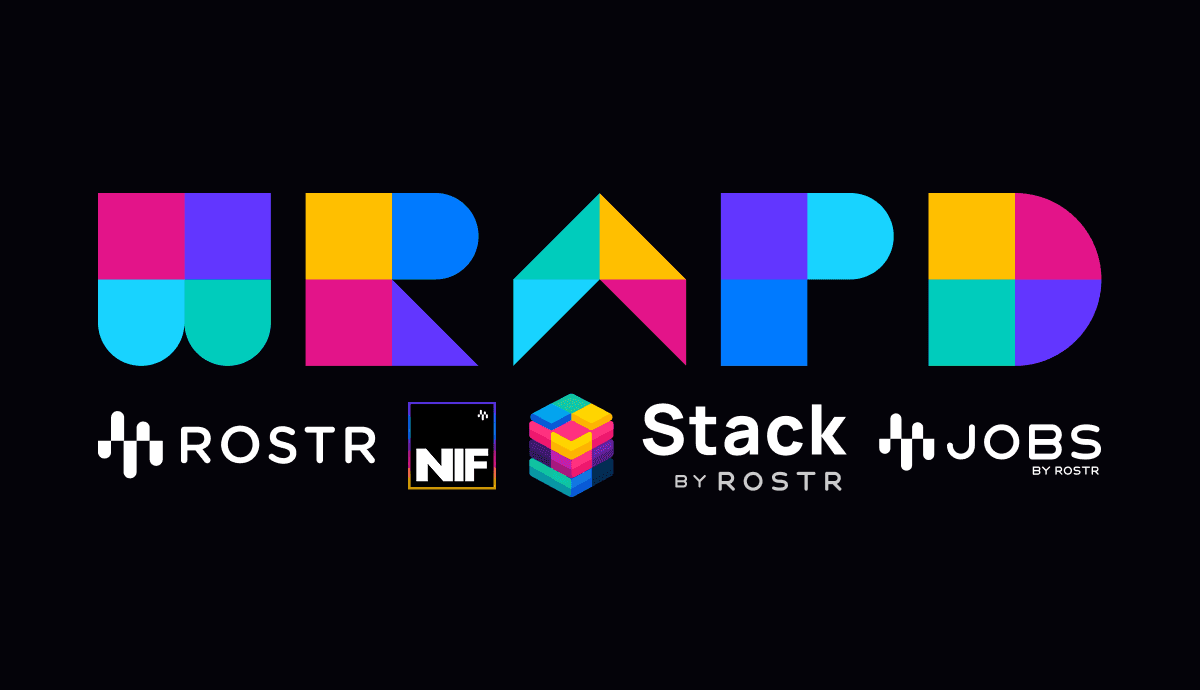
Charts & Consumption Data
Dec 12, 2025
1 min read
The ROSTR Group Releases Its 2025 Stats Of The Year
Highlights include over 560K people using at least one of TRG’s products
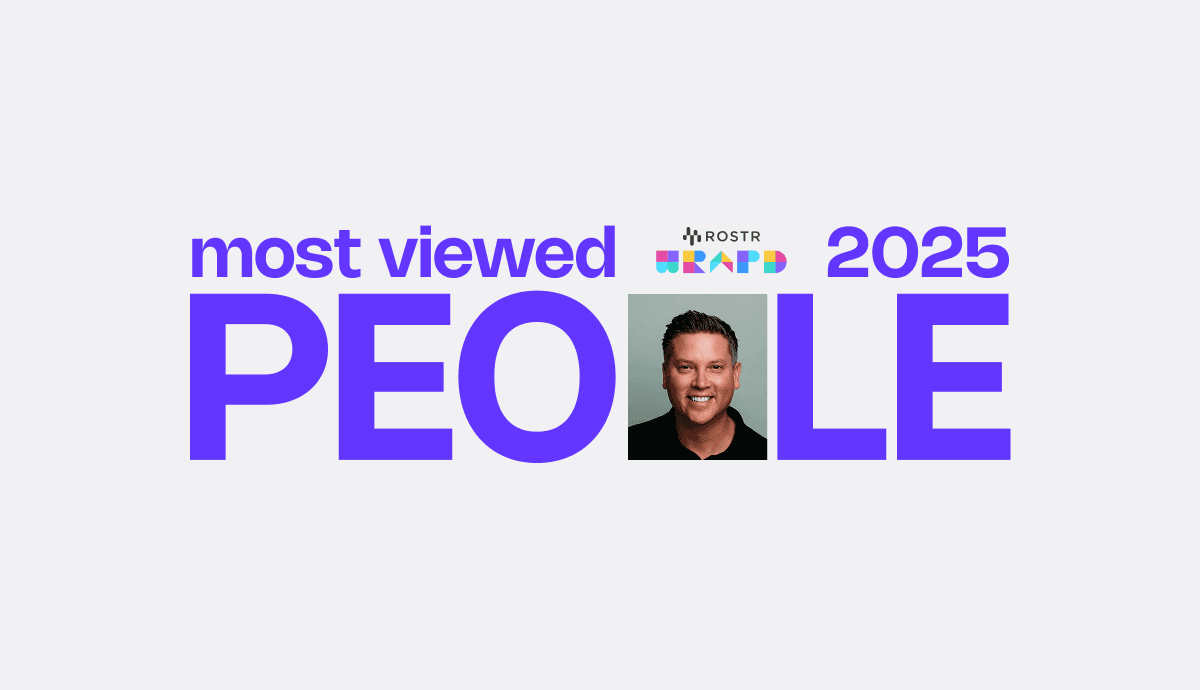
Charts & Consumption Data
Dec 10, 2025
1 min read
Jason Owen, Kirk Sommer & Nick Storch Claims Most Viewed People’s Top Spots on ROSTR for 2025
Shane Boose also takes No. 1 on the new “Breakthrough” Chart
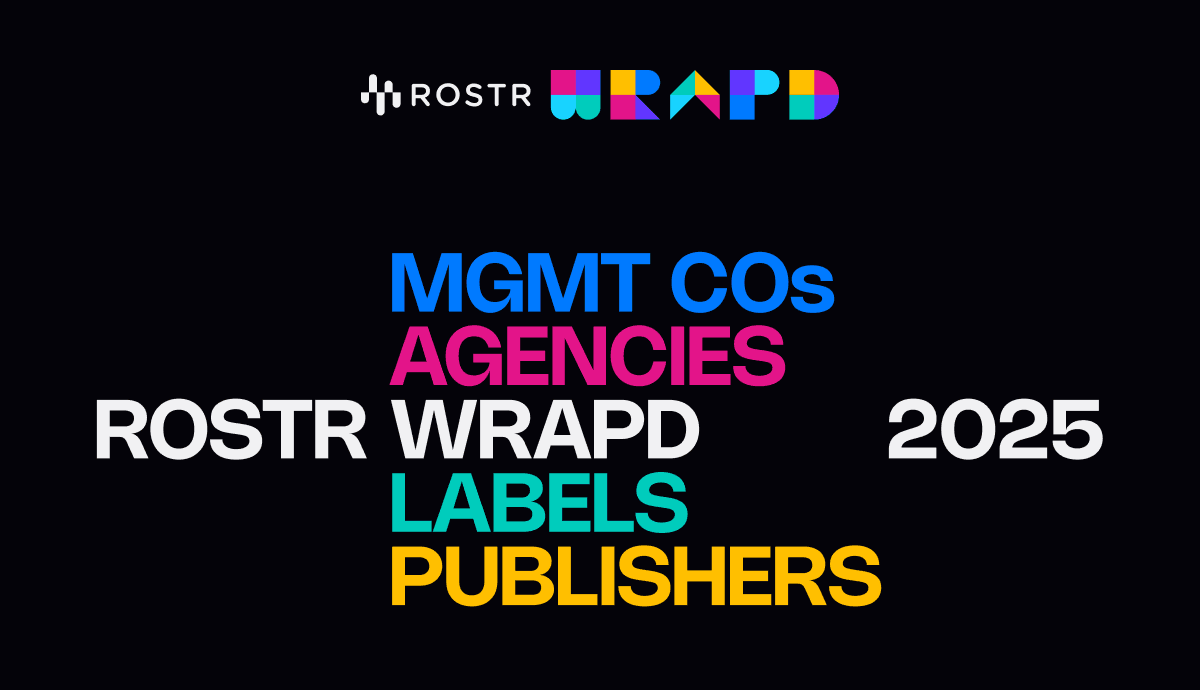
Charts & Consumption Data
Dec 9, 2025
1 min read
Red Light, Atlantic, Wasserman & Warner Chappell Top 2025’s Most Viewed Companies on ROSTR
3 of 4 stay on top while WMG’s Atlantic gains the top spot for labels

The ROSTR Group Releases Its 2025 Stats Of The Year
Highlights include over 560K people using at least one of TRG’s products

The NIF Team
Charts
Dec 12, 2025

Jason Owen, Kirk Sommer & Nick Storch Claims Most Viewed People’s Top Spots on ROSTR for 2025
Shane Boose also takes No. 1 on the new “Breakthrough” Chart

The NIF Team
Charts
Dec 10, 2025

Red Light, Atlantic, Wasserman & Warner Chappell Top 2025’s Most Viewed Companies on ROSTR
3 of 4 stay on top while WMG’s Atlantic gains the top spot for labels

The NIF Team
Charts
Dec 9, 2025

Bad Bunny is Spotify’s Most Streamed Artist Globally of 2025
The Puerto Rican artist dethroned Taylor Swift

Rod Yates
Charts
Dec 4, 2025

Australian Music is Being Killed by Streaming Algorithms, says Report
The number of Australian artists being streamed in Australia has declined significantly

Rod Yates
Charts
Nov 28, 2025

New Poll Says Most Music Fans Prefer Not to Listen to AI-Generated Songs
The survey was conducted by The Hollywood Reporter and the University of Miami’s Frost School of Music

Harry Levin
Charts
Nov 20, 2025





























